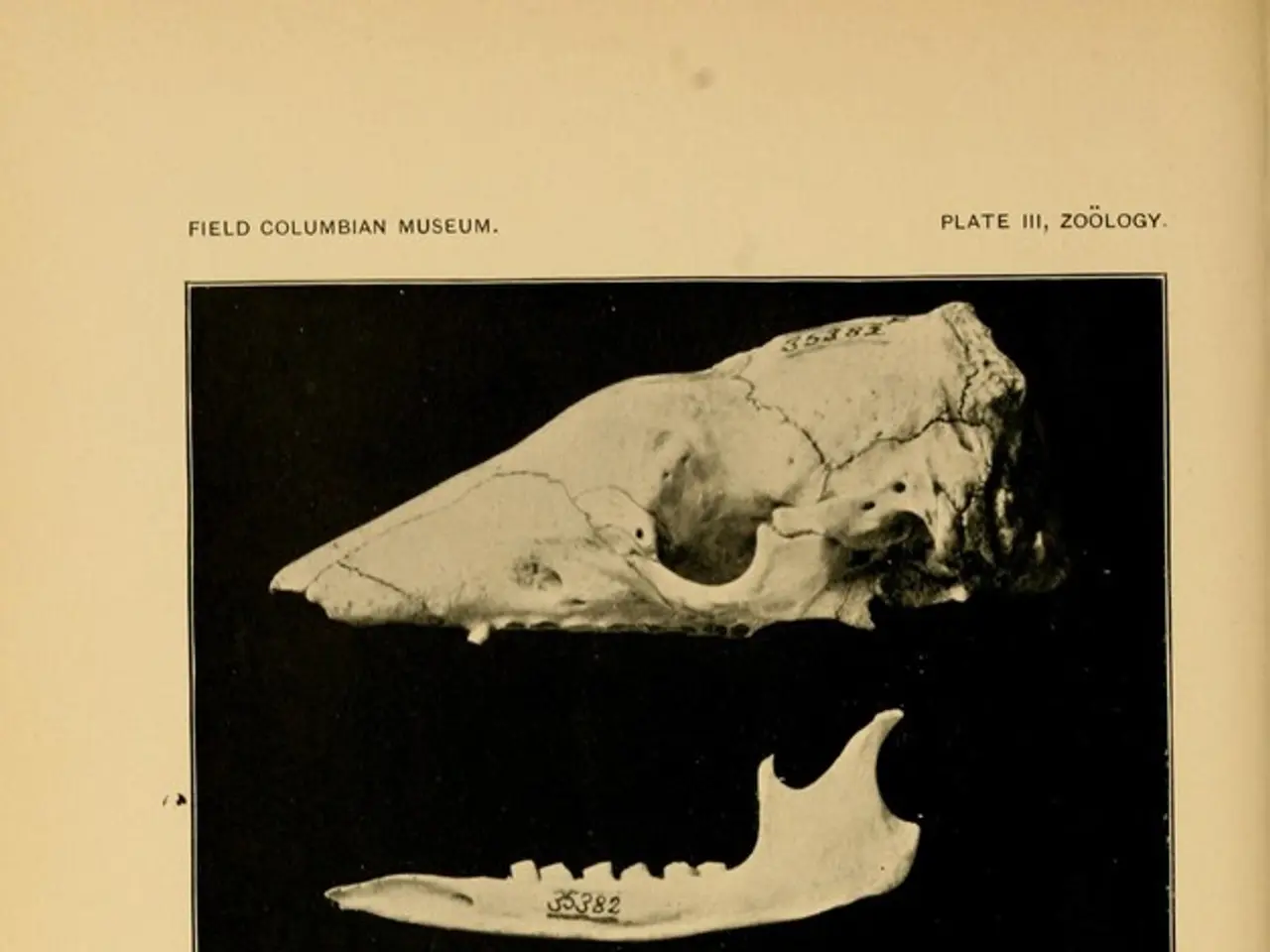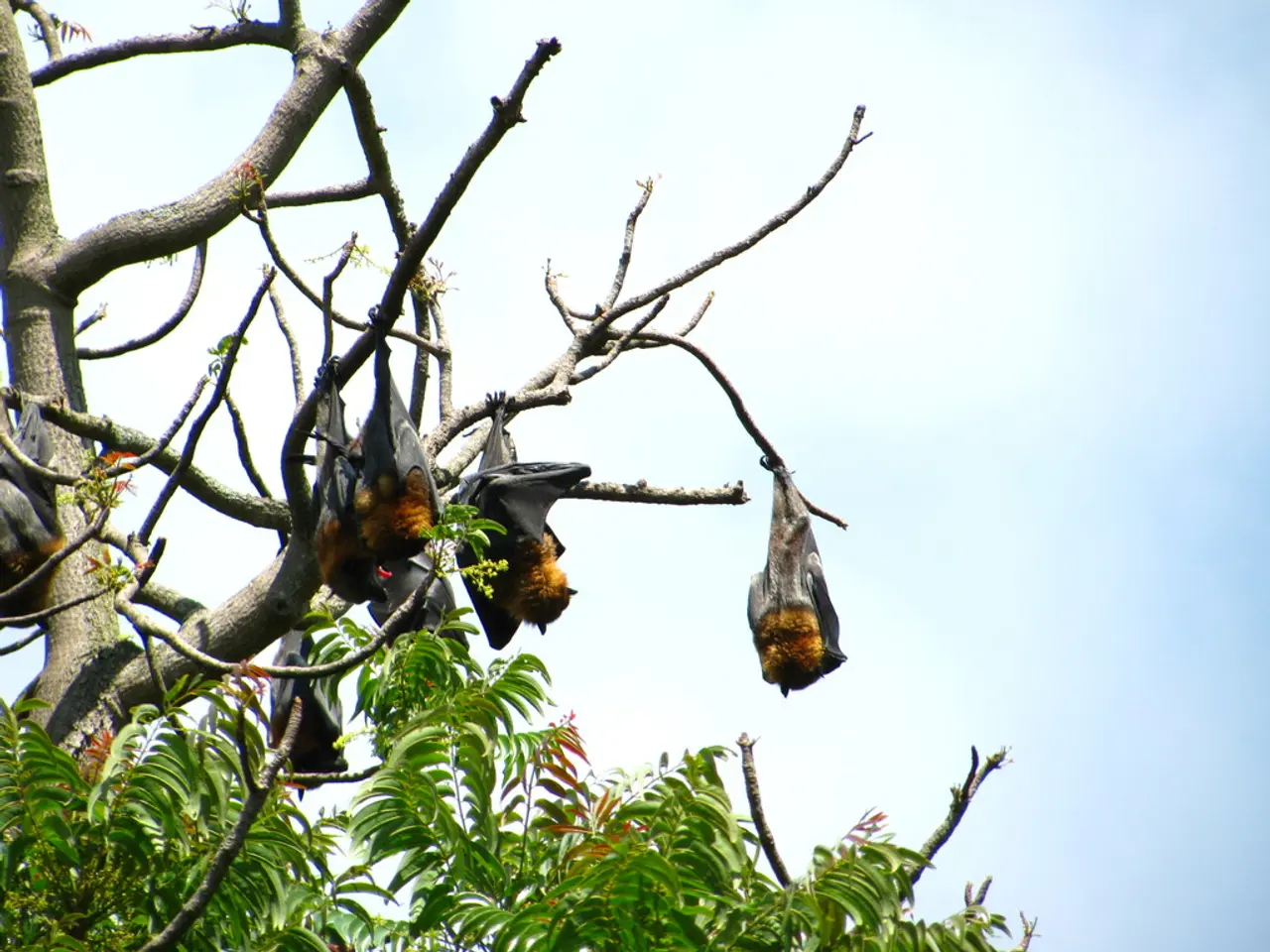Ancient Neanderthals were processing fat for consumption approximately 125,000 years ago, a recent discovery reveals.
In the heart of central Germany, the Neumark-Nord archaeological site is shedding new light on the survival strategies of our ancient ancestors, the Neanderthals. This significant location, dating back approximately 125,000 years, offers insights into the Neanderthals' early and strategic use of fat rendering techniques, providing evidence of their advanced understanding of nutrition and resource management.
The site, often described as a "fat factory," showcases Neanderthals' specialized locations for the intense processing of animal bones to extract bone marrow and grease. This labour-intensive task required assembling large quantities of bones to make the effort worthwhile, indicating a sophisticated understanding of nutrition and resource management.
Archaeologists have discovered that the Neumark-Nord landscape preserves a broad pattern of Neanderthal behavior. They hunted large animals like straight-tusked elephants, minimally butchered deer onsite, transported some carcass parts, and cached bones at specific places for later fat rendering. This suggests advanced planning and long-term resource strategies rather than opportunistic scavenging.
Evidence also points to Neanderthals using fire to modify vegetation and manage the landscape around the area, supporting the idea that they manipulated their environment in ways previously underestimated.
The extraction of fat from animal bones was crucial during winter months when plant-based foods were less abundant, providing energy during lean times. This strategy helped Neanderthals avoid "rabbit starvation," a condition caused by excessive protein intake.
Neanderthals relied heavily on fat as a macronutrient due to their high caloric demands from their hunter-gatherer lifestyle. By intensively producing and utilizing fat, they demonstrated an advanced dietary strategy that enhanced their survival during interglacial periods when competition for resources could be intense.
Archaeologists found evidence of sophisticated tool use, such as anvils and hammerstones, at Neumark-Nord, indicating Neanderthals employed these tools to break bones and extract fat. The site has yielded remains from diverse species, reflecting Neanderthals' ecological adaptation and resourcefulness.
The Neumark-Nord findings challenge the outdated view of Neanderthals as primitive and unsophisticated, showing instead a complex picture of intensive resource management, strategic planning, and advanced use of technological and ecological knowledge to optimize survival. This discovery significantly enriches our understanding of how Neanderthals adapted to and thrived in their environments during the Paleolithic era through innovative food processing techniques like fat rendering, a precursor to later human culinary and economic practices.
- The study of Neumark-Nord archaeological site offers insights into the environmental-science aspects of Neanderthal life, revealing their advanced understanding of nutrition and resource management.
- The Neumark-Nord site, often referred to as a "fat factory," indicates that Neanderthals had a specialized lifestyle rooted in data-and-cloud-computing-like planning for food resource management.
- The Neumark-Nord findings highlight a sustainable-living approach adopted by Neanderthals, where they used technology like fire to manage their environment, fostering lifelong-learning about environmental-science and ecological knowledge.
- Online-education about Neanderthal's life and survival strategies would benefit from the Neumark-Nord discoveries, providing students with an understanding of how they embraced education-and-self-development for survival during the Paleolithic era.
- Neumark-Nord sheds light on the importance of lifestyle adaptations in home-and-garden settings, revealing how Neanderthals extracted fat during winter months to ensure their energy needs were met, avoiding "rabbit starvation."
- The Neumark-Nord site underscores how the Neanderthals' advanced use of science and technology influenced their lifestyle, paving the way for future human developments in climate-change mitigation and resource management.




![Video Explanation: An Overview of Explainer Videos [Including Examples and Definition]](/en/content/images/size/w1280/format/webp/20250721153209_explainer-video-examples-meaning.jpeg)